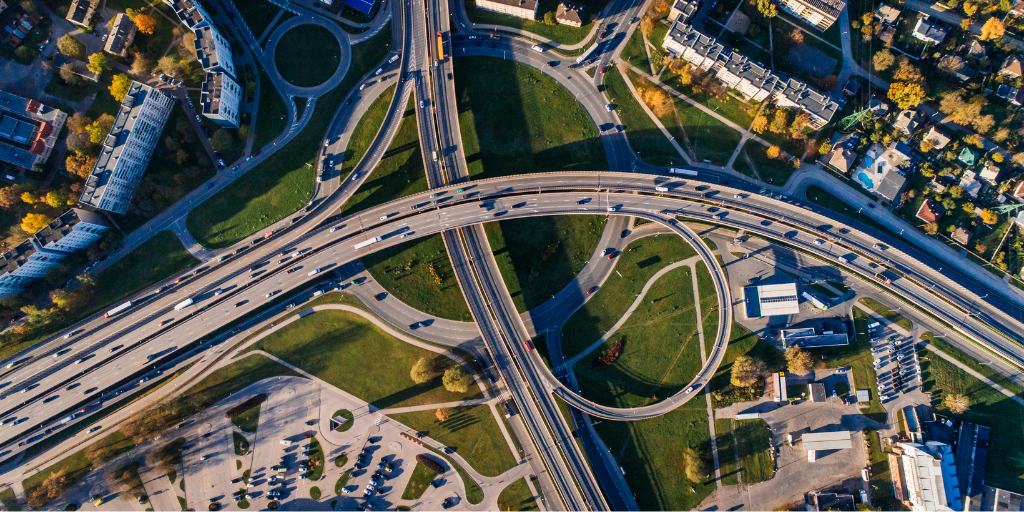Table of Contents
For clarity, the article is divided into thematic sections. Click a section title to jump there:
What is business resilience?
Why resilience is important
Key areas (pillars) of resilience
Benefits of business resilience
Strategies for building resilience
How Semantic Visions supports resilience
Conclusion and FAQ
Business resilience is an organisation’s ability to quickly adapt to disruptions and continue operating even during a crisis. TechTarget defines business resilience as the ability of a company “to adapt to disruptions while maintaining continuity of operations and protecting people, assets and reputation”. It includes not just recovery after incidents and business continuity but also agility and the ability to reshape processes for new conditions.
The international standard ISO 22316:2017 describes resilience as “the ability of an organisation to absorb and adapt in a changing environment". Similarly, BCG states that a resilient company can absorb stress, recover critical functions and thrive under altered circumstances. True resilience is therefore more than reacting to an incident – it involves anticipating risks, adapting and exploiting opportunities even during a crisis.
Business resilience vs. business continuity
Business continuity plans how to maintain operations during a specific outage (e.g., power failure, IT breakdown). Resilience goes further: it is a strategy that enables a company to adapt and thrive over the long term despite lasting change. ISO 22316 regards business continuity as one component of resilience, but resilience also includes crisis management, cyber security, risk management and the ability of employees to respond.
Resilience categorisation
According to Walsh College the level of organisational resilience can be divided into four stages: fragile – companies unable to withstand change; robust – handle everyday changes; resilient – withstand expected and unexpected changes; and anti‑fragile – not only withstand change but also learn and strengthen from it. Achieving anti‑fragility requires a proactive approach to risk and openness to innovation.
Growing volatility and uncertainty
Recent years have brought the COVID‑19 pandemic, geopolitical tensions and inflationary pressures. These events have shown that companies unable to adapt can quickly go bankrupt during a crisis. Walsh College notes that resilience may decide whether a company survives or fails, even during less obvious threats such as rising prices or labour shortages.
Economic analysis by Economist Impact emphasises that resilience is a fundamental component of a value‑creation strategy: companies must be able to absorb stress, recover critical functions and thrive. The study identified three pillars for building resilience – organisational, technological and operational—and stressed the need to integrate ESG factors and better protect digital assets.
Human factor and culture
Resilience is not only about systems. All employees must be trained to know how to respond to chaotic situations because the human element is crucial. A culture of preparedness and the ability to make decisions quickly are key to managing crises.
Comprehensive resilience requires strengthening multiple areas. A Semantic Visions article on resilience management identifies six main pillars:
- Operational resilience – ensuring that critical functions continue despite disruptions; includes continual testing of systems and building redundancy.
- Financial resilience – ability to withstand economic shocks through liquidity reserves, effective cost management and revenue diversification.
- Cyber resilience – protecting digital infrastructure from attacks via robust security measures and rapid response capabilities.
- Supply chain resilience – mitigating vulnerabilities in supplier networks; includes diversifying suppliers, building stockpiles and monitoring risks in real time.
- Workforce resilience – supporting employees through training, flexibility and mental‑health programmes so they can adapt quickly.
- Reputational resilience – protecting the company’s credibility through transparent communication and proactive management of reputational risks.
In addition to these areas, two factors measure an organisation’s ability to adapt: stress tolerance (the ability to endure a certain level of stress, such as financial crises or staff shortages) and flexibility (willingness to adopt new technologies and change processes). Increasing these capabilities raises overall resilience.
Resilient organisations gain several advantages:
- Faster recovery and higher agility – Companies with robust resilience strategies report 20–30% faster recovery from disruptions.
- Lower costs – By identifying risks early and having prepared plans, firms limit damage and minimise reaction costs.
- Stakeholder trust – Transparent communication and the ability to maintain operations build trust with customers, partners and investors.
- Regulatory compliance – Many industries require robust resilience plans; meeting these requirements reduces legal risks.
- Long‑term sustainability – Resilience enables companies to adapt to new conditions (e.g., technologies, ESG requirements) and maintain growth.
Based on research by Semantic Visions and other sources, several practical strategies can be defined:
1. Diversify risks
Avoid relying on a single supplier channel, revenue source or IT infrastructure. Diversification of suppliers and revenue streams increases the ability to survive disruptions; for example, a company with only overseas suppliers should also contract local suppliers.
2. Create a culture of preparedness
Resilience starts with people. Employees need to be trained to proactively solve problems and make quick decisions. A culture of open communication and scenario‑based training helps keep key processes functional even under uncertainty.
3. Use technology for early risk detection
Artificial intelligence, data analytics and automation can reveal threats before they develop. Semantic Visions advises investing in real‑time monitoring and predictive models that identify operational, financial or cyber risks and enable timely reaction. This aligns with findings that data and analytics are key to supply‑chain visibility and agility.
4. Strengthen financial stability
Ensure sufficient liquidity, limit excessive debt and build reserves so the company can withstand economic downturns. Planned cost‑reduction strategies should not jeopardise key functions.
5. Test and update plans
A resilience plan is only as effective as its testing. Organisations should regularly conduct business impact analyses, stress tests and simulation exercises. Testing reveals weaknesses and helps improve strategies.
Additional recommendations
Semantic Visions also emphasises the importance of building an agile organisation, supporting self‑sufficient teams, developing adaptable leaders and investing in culture and talent. These aspects complement each other – e.g., agile structures enable quick decision‑making, while investing in employees ensures people can handle new technologies and processes.
Visibility and risk monitoring
You cannot manage risk without information. Jan Balatka of Semantic Visions notes in a Digital Journal interview that supply‑chain resilience starts with seeing what is happening with every supplier—only then can disruptions be anticipated and addressed before they scale (medium.com).
The Semantic Visions AI platform provides continuous monitoring of structured and unstructured data. Thanks to advanced natural‑language processing (NLP) and machine learning, it filters noise and shows only relevant signals, reducing false positives by up to 70%. The system integrates data from media channels, forums and internal records, normalises and evaluates them in real time.
Supply‑chain monitoring
Supply chain resilience is evolving: because of the pandemic and geopolitical shocks, companies focus not only on Tier 1 suppliers but also deeper layers of the chain, as each level carries specific risks—raw material shortages, for example, or cyber security vulnerabilities in IT supply chains. Data and analytics are the basis of visibility; new methods like combining knowledge graphs and retrieval‑augmented generation (RAG) make it possible to map and evaluate complex supply networks.
The Semantic Visions platform can map multi‑tier supply chains in real time, detect risks and check suppliers against sanction lists. A company white paper states that its Multi‑Tier Supply Chain Mapping gives insight into Tier 2 and 3 suppliers, reveals hidden dependencies, helps meet ESG and regulatory requirements and strengthens operational resilience.
Timely warning and decision‑making
The Risk Detection platform offers a range of features that support resilience: real‑time alerts, fusion of data from various sources, interactive dashboards and reports, API integrations and supply‑chain monitoring. Data are processed into a dynamic risk score, allowing threats to be prioritised and responded to quickly.
Why Proactive Monitoring Matters: Four Examples
Business resilience is not just a buzzword—it is a strategic necessity. In an environment where disruptions can come from any direction, organisations must strengthen their ability to absorb stress, adapt quickly and thrive. Strong resilience requires:
- a comprehensive approach covering operational, financial, cyber, supply‑chain, workforce and reputational areas;
- the use of data and technology for early threat detection;
- the development of a culture of preparedness and adaptive thinking;
- regular testing and updating of plans.
Frequently asked questions
What is the difference between business resilience and business continuity?
Business continuity focuses on maintaining specific processes during an incident (e.g., an IT failure). Business resilience has a broader scope—it includes anticipating threats, adapting and leveraging new opportunities.
How do you start building resilience in a company?
Begin with a risk and vulnerability analysis, set a strategy and invest in monitoring technologies. Training employees and creating a crisis‑ready culture are also crucial.
Why is supply‑chain visibility key to resilience?
Research shows that without insight into supplier status, disruptions cannot be anticipated or responded to in time. Monitoring all tiers of the supply chain and using AI to identify risks gives companies a competitive edge.
Is resilience only about survival?
No. True resilience means not just surviving but using change as a catalyst for growth and innovation—so‑called anti‑fragility. Companies that invest in resilience often restore performance more quickly and achieve higher growth than competitors.
See Everything. Focus on What Matters.
svEye™ filters the noise to uncover meaningful patterns and insights. Gain clarity, stay informed, and drive smarter decisions with a comprehensive overview.




.avif)


